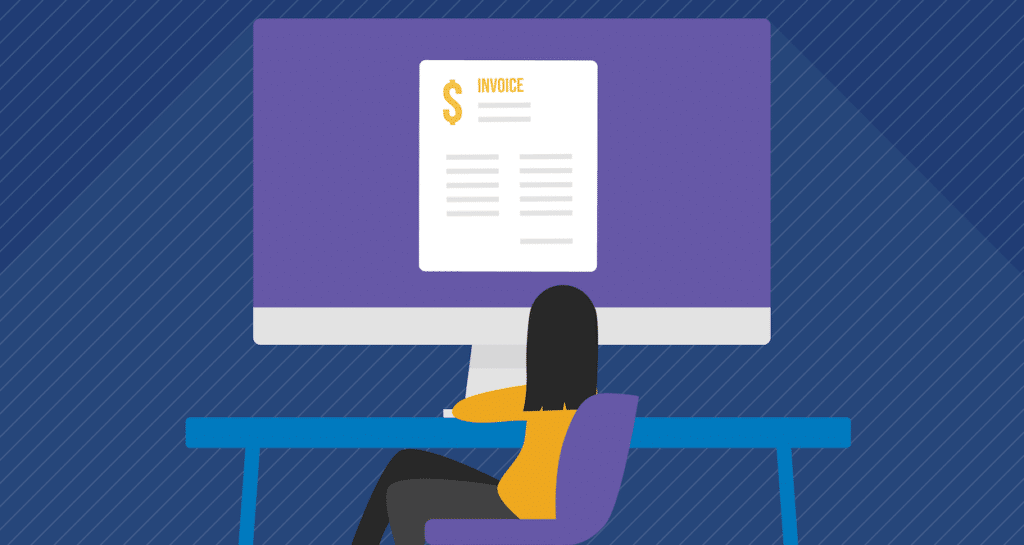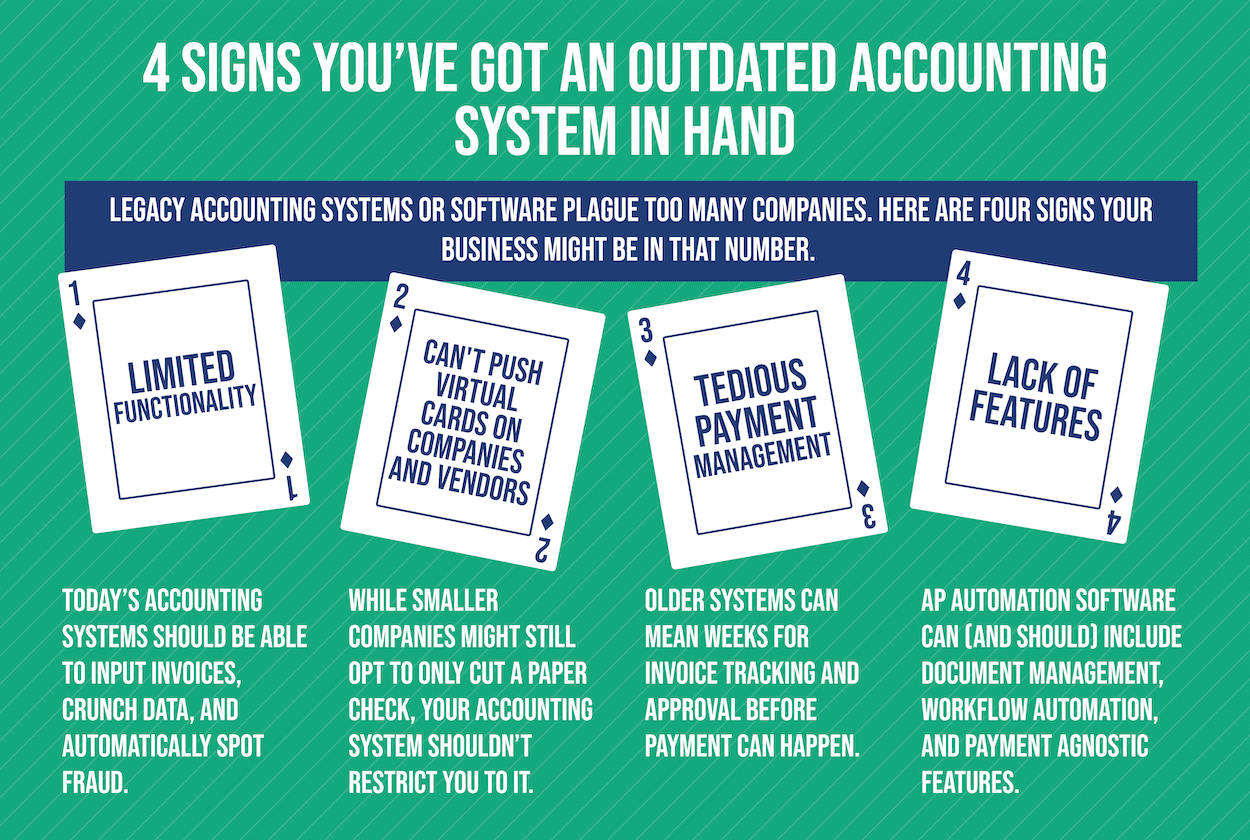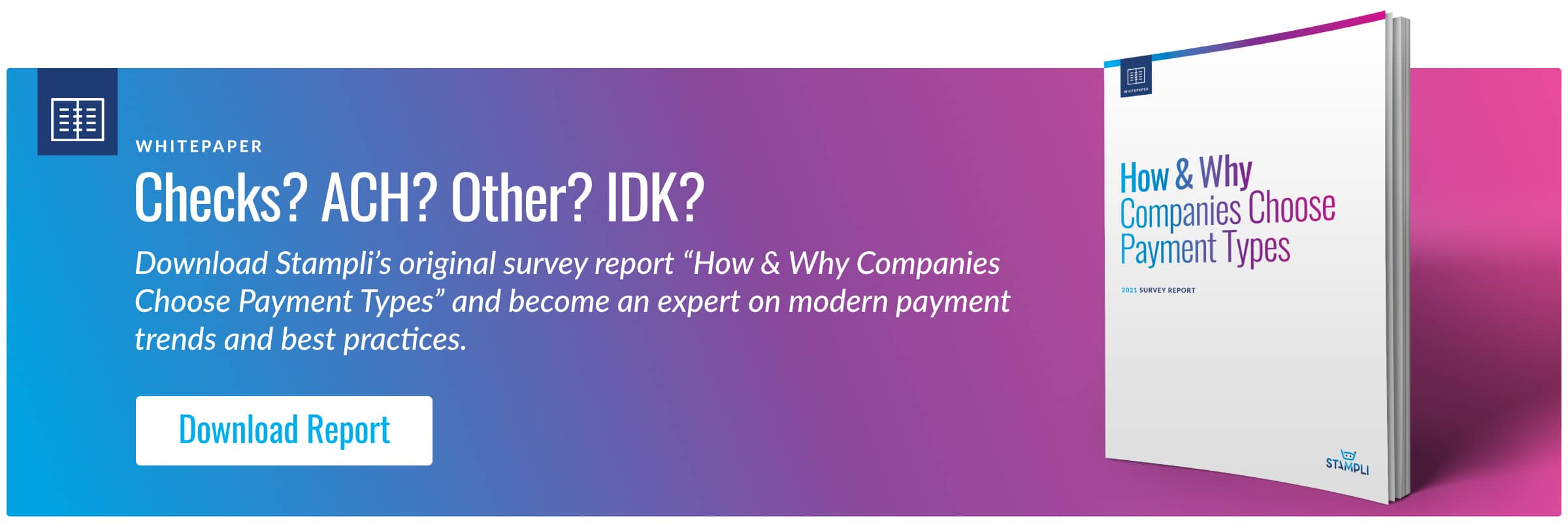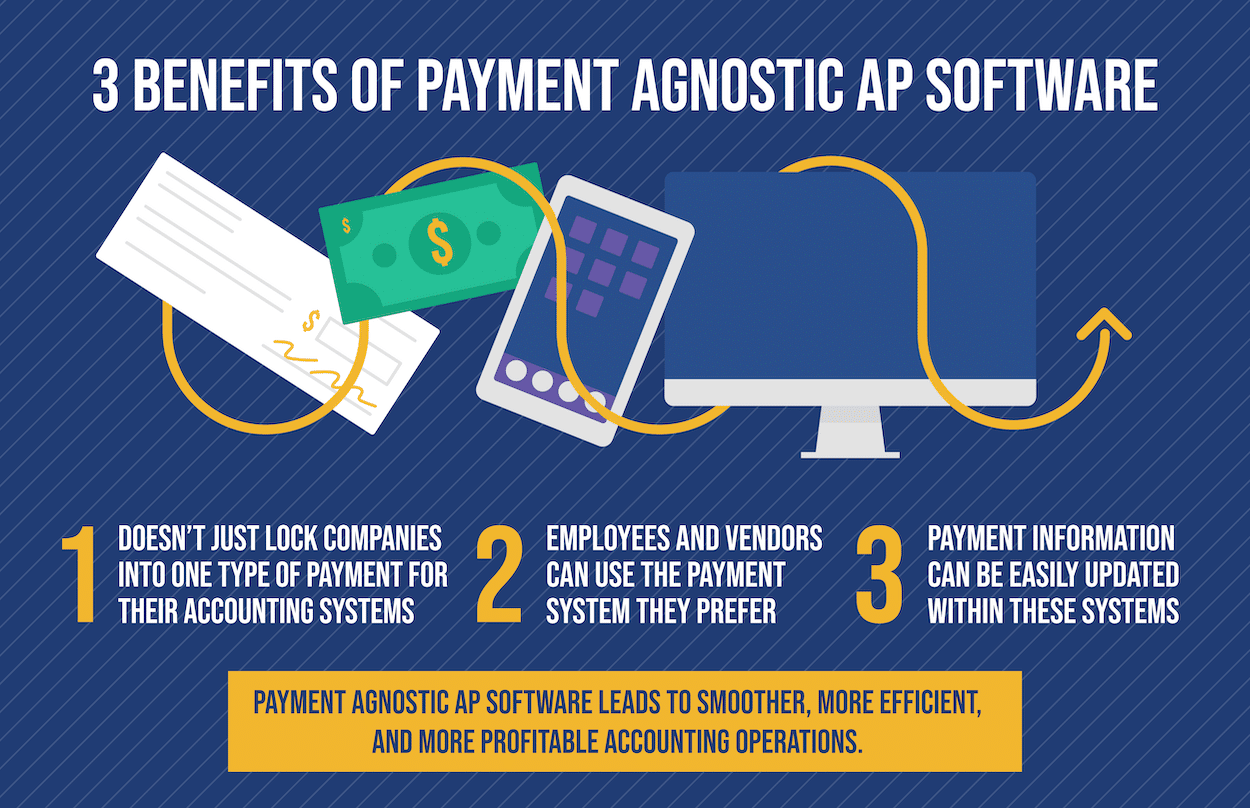Payment Agnostic Software: Finding an AP System that Works for You

Many accounts payable departments are still mired in the old days when it comes to payments, having to rely on legacy systems that are clunky, inflexible, and difficult to use. Even companies that have attempted to modernize with accounting software can get restricted by limited functionality. Needless to say, both scenarios can make invoice processing costly and time-consuming.
That said, there is a better way to pay and reconcile. Join us as we discuss how to determine if you have sufficiently flexible accounting software and, if you don’t, how to choose AP software that can make payments something you can control and easy to use.
Four Signals it’s Time for Payment Agnostic AP Software

It can be tough to keep up with all the finance trends and emerging accounting systems, especially if the status-quo is a legacy accounting system.
Accounting software, even for small companies, can run tens of thousands of dollars. More sophisticated solutions, such as enterprise resource planning systems, can cost much more depending on the company size and number of users. While these solutions offer a suite of financial and accounting tools, what’s often needed is software that accounts payable and the rest of the organization can use to process, approve, and pay vendor invoices. This is where EPP and accounting systems integrate with AP Software to communicate invoice information both ways, but when do you know it’s time that your invoice processing, approvals, and payments system needs an upgrade? Here are the signals:
1. When the Functionality Just Isn’t There
At its most core level, accounts payable departments process invoices so businesses can remit payment for goods or services. Businesses implement new accounting or accounts payable systems when the number of invoices reaches a critical enough mass that it becomes more cost-effective than having armies of AP specialists manually key in and process invoices.
With the U.S. Bureau of Labor Statistics reporting that the average accounting staffer earned around $41,000 in 2019, and given how modern accounting software dramatically increases the speed at which invoices are processed, it simply makes the cost of purchasing the software easier to justify.
But just opting for any technology stack isn’t enough, with many accounting systems not capable of more nuanced (and critical) AP functionality such as automated data capture, data analysis dashboards, and fraud alerts. Some accounting and AP systems, as we’ll explore in a moment, also make payment too much of a chore, by not offering streamlined functionality for payment runs.
2. When the Payment Methods are too Restrictive
As the Association for Financial Professionals notes, paper-based accounts payable systems are “still the case for some smaller businesses, especially in developing countries.”
More and more accounts payable departments, however, are seeking a variety of payment methods beyond what a single system offers such as: checks, EFTs (electronic funds transfers), wire transfers for high-value transactions, and ACH (automated clearing house) payments.

With the rise of the digital accounts payable and accounting systems, it makes sense to have software systems that enable control over how invoices are paid, with anytime and from anywhere functionality, no matter the working environment. All the same, some account software is quite limited in payment types.
3. When Managing Payments Becomes a Chore
Getting an invoice paid through traditional accounts payable practices can be a maze of data entry, document matching, and waiting for approvals, with the process sometimes stretching for weeks. It’s a big reason that a single invoice can cost $10 to process.
Best of breed AP Automation software can cut down the tedium and ensure than managing payments doesn’t become a chore. This, in turn, can cut those invoice processing costs and save money.
4. When Your System Doesn’t Have Enough Features
These days, why settle for simplistic accounting systems with limited payment options and functionality?
As one Southern California-based accountant notes, good software can include document management capabilities which are good for record-keeping. AP Automation software can also include workflow automation, with automatic audit preparation and a wide assortment of payment possibilities be it in-house or functionality to process payment in another system.
Best of all, with the emergence of cloud-based computing, features of AP Automation systems are continuing to develop and are scalable, with organizations able to implement them to their size and specific need. This in addition to working with your current accounting systems with fast and easy integrations.
What to Look for in Selecting AP Automation Software

For companies that have come to the realization that their accounting systems or software no longer meet their needs, the next step is knowing what to look for with AP Automation software. Here are some things to be cognizant of.
What Most Major Accounts Payable Automation Platforms Lack
First off, AP automation platforms can vary significantly among the growing field of service providers. These providers each bring different strengths to the table, with some prioritizing cost and basic functionality and others offering more sophisticated, though, costly features. As Stampli notes, “There’s not a one-size-fits-all solution for AP Automation.”
What most providers lack, though, is an automated approval process and an easy process for dealing with changes or exceptions. It would be great if every invoice could follow the same simple path for approval. But as any AP specialist could attest, accounting rarely works this way due to exceptions. Thus, the best automated solutions offer exception handling functionality all the while adapting to dynamic situations.
How to Spot Payment Solutions Disguised as AP Automation
Accounts payable automation has emerged as a trend in recent years, part of broader discussions around the ever-increasing role of artificial intelligence in business. Thus, many service providers might want to say they’re offering an AP Automation solution, even if it’s little more than run-of-the-mill payments software made to look like AP Automation.
One tell-tale sign is if AP Automation is an added feature for something that’s primarily a payment solution. Another method to spot payment solutions disguised as AP Automation solutions is whether or not they push virtual cards on your business and vendors. A knowledgeable sales representative should be able to discuss some of the hallmarks of AP Automation, such as its ability to process large numbers of invoices with any desired payment method and, over time, use machine learning to do this quicker, with fewer errors, and all the while, mitigating fraud.
Getting a Variety of Ways to Pay
Automated clearing house, or ACH transactions have become the norm for businesses, with a solid 93 percent of employees preferring direct deposit, which generally requires ACH. Large numbers of vendors also prefer to be paid this way rather than wait for paper checks.
Accordingly, ACH payments should be just one of many ways that an AP automated solution allows companies to clear invoices. The best AP automated solutions these days allow companies to pay for goods and services however they or their vendors prefer.
The Importance of Payment Agnostic AP Software
This might be the most critical factor of all when selecting AP Automation software. Some solutions in this realm lock companies into a single type of payment or single payment system. Which is necessitating costly training to get all invoice approvers within a company using the same system used by accounting for payments, which can limit payment freedom if the organization desires to switch payment systems (which is fairly common today).
But it doesn’t have to be this way, with solutions like Stampli offering payment agnostic AP software. With payment agnostic accounts payable systems, companies can:
- Have intuitive interfaces for each user role (i.e. approvers, processors, management) with only the information and functionality that a specific users needs;
- Pay for goods and services using a variety of types of payment;
- Enable companies to be in control for how and when they pay, be it convenience or collection of rewards;
- Automatically update payment information between systems if paid outside of the payment agnostic AP Automation system.
It goes without saying, too, that while companies will have a lot more flexibility with payment agnostic AP software, the process will also be simpler. It’s easy to automatically import bill and invoice data. Then workflow capabilities within the software can allow the invoices to route wherever they need to go for approval, with suggested approval workflow features. And document reconciliation will be more automated.
Too often, payment solutions disguised as AP Automation systems can control companies to do things their way. While, payment agnostic AP Automation software is just the opposite, as you are always in control of invoice processes and payments.
Tired of systems that has you working for it rather than working for you? Contact Stampli today for AP Automation in a matter of days.